10 Most Sustainable Luxury Clothing Brands: The Conscious Consumer’s Guide
Affiliate Disclosure
Hey fellow impactful ninja ?
You may have noticed that Impactful Ninja is all about providing helpful information to make a positive impact on the world and society. And that we love to link back to where we found all the information for each of our posts.
Most of these links are informational-based for you to check out their primary sources with one click.
But some of these links are so-called "affiliate links" to products that we recommend.
Why do we add these product links?
First and foremost, because we believe that they add value to you. For example, when we wrote a post about the environmental impact of long showers, we came across an EPA recommendation to use WaterSense showerheads. So we linked to where you can find them. Or, for many of our posts, we also link to our favorite books on that topic so that you can get a much more holistic overview than one single blog post could provide.
And when there is an affiliate program for these products, we sign up for it. For example, as Amazon Associates, we earn from qualifying purchases.
What do these affiliate links mean for you?
First, and most importantly, we still only recommend products that we believe add value for you.
When you buy something through one of our affiliate links, we may earn a small commission - but at no additional costs to you.
And when you buy something through a link that is not an affiliate link, we won’t receive any commission but we’ll still be happy to have helped you.
What do these affiliate links mean for us?
When we find products that we believe add value to you and the seller has an affiliate program, we sign up for it.
When you buy something through one of our affiliate links, we may earn a small commission (at no extra costs to you).
And at this point in time, all money is reinvested in sharing the most helpful content with you. This includes all operating costs for running this site and the content creation itself.
What does this mean for me personally?
You may have noticed by the way Impactful Ninja is operated that money is not the driving factor behind it. It is a passion project of mine and I love to share helpful information with you to make a positive impact on the world and society. However, it's a project in that I invest a lot of time and also quite some money.
Eventually, my dream is to one day turn this passion project into my full-time job and provide even more helpful information. But that's still a long time to go.
Stay impactful,
Amid growing concerns about the textile industry’s environmental impact, there is pressure to find greener clothes for your wardrobe. Unfortunately, luxurious materials such as leather, lambswool, and cashmere often come from farming systems that are neither sustainable nor ethical. Yet, fashion greenwashing makes it harder for you and other consumers to determine which luxury brands offer the most eco-friendly garments. So, we had to ask: Which are the most sustainable luxury clothing brands?
The most sustainable luxury clothing brands are WE-AR4, Stella McCartney, and Eileen Fisher, which source low-impact materials and strive for circularity. Additionally, Maggie Marily and SANTICLER reduce their carbon footprints and adhere to ethical practices.
Whether you are searching for a cocktail dress or a winter coat to add to your wardrobe without negatively impacting the soil, the water, the animals, and other people, there is a brand for you. So, let’s keep reading to learn more about the most sustainable luxury clothing brands and how they ensure sustainable, ethical practices.
Here’s How We Selected the 10 Most Sustainable Luxury Clothing Brands
The fast fashion industry has pushed for us to buy trend-dependent, easily replaceable clothing items. Yet, overbuying and landfilling clothes can have a significant impact, especially if they are luxury clothing items made with high-impact materials like leather, lambswool, or cashmere.
“Sustainable: The ability to be maintained at a certain rate or level | Avoidance of the depletion of natural resources in order to maintain an ecological balance”
Oxford Dictionary
The brands on this list were chosen based on their commitment and actions to promote sustainable practices while reducing the environmental impacts of the textile industry.
They are transparent about their materials, processes, and workforce management within their supply chain.
Some brands focus their efforts on reducing waste and optimizing natural resources while others strive to reduce the carbon footprint of their clothes.
All of these brands share the commitment to reshape the textile industry toward a more sustainable and Earth-friendly sector.
These Are the 10 Most Sustainable Luxury Clothing Brands
Most Sustainable Luxury Clothing Brands
Overall, these luxury clothing brands are sustainable. Yet, they take various approaches to reduce environmental impacts and uphold ethical standards. Let’s dive into each brand and find out more.
WE-AR4: Luxury Clothes and Accessories Made With Excess Materials


“Our approach is to reinvent the process from the inside out, crafting our designs from surplus materials and leathers commissioned by other luxury fashion houses and left unused, aka “deadstock”. By doing so, we create a direct path to climate-positive impact, finding a new life for materials that are on a path to be down-cycled or become waste.”
WE-AR4
🌎
How do they ensure their sustainability?
WE-AR4 prioritizes sustainability with low-impact materials, integrated circularity, and low-carbon operation.
- Firstly, they use a high proportion of surplus materials or deadstock commissioned by other luxury fashion houses and left unused. Excess textiles and leather fabrics are the primary materials for over 95% of WE-AR4’s collection. Their material guidelines prioritize (recycled) natural fibers, especially cotton and linen. Regarding packaging, the brand also prioritizes eco-friendly materials, including paper that is either FSC-certified or made from at least 50% recycled content and compostable polybags. They pledge to continue reducing plastic use and that, by 2025, all the plastic they use will be recyclable or compostable.
- Secondly, WE-AR4 integrates circularity practices in their operation, such as using thrift clothes and accessories to style their photo shoots and then selling them through RE-AR4.
- Last but not least, they manufacture either closest to where the raw materials are available or locally in New York City near their Distribution Center to minimize transportation and the associated carbon footprint. Additionally, they offer Free Carbon Neutral Shipping for domestic and international customer orders, which supports projects that offset the emissions from shipping.
🌐
How do they ensure their ethics?
WE-AR4 binds their suppliers to a Supplier Code of Conduct, which adheres to both local laws of the countries in which they operate as well as international laws—the International Labor Organization (ILO) Conventions and the Ethical Trade Initiative (ETI) Base Code. This helps to ensure that workers are treated with dignity, fairness, and an elevated regard for their health and safety.
- They also make official commitments to the welfare of the animals in their supply chain. Specifically, they only use deadstock leather. Other animal-derived fibers, including sheep wool, cashmere, silk, down, and feather, are sourced from deadstock and upcycled sources whenever possible.
- When they’re not, WE-AR4 opts for animal-derived fibers with reliable certifications, such as Global Recycled Standard (GRS) or Recycled Content Standard (RCS) for recycled fibers (wool, cashmere, down, feather), Responsible Down Standard (RDS) or Traceable Down Standard (TDS) for down, Global Organic Textile Standard (GOTS) or Organic Content Standard (OCS), or Ahimsa silk for silk.
🤝
Are they part of any giving-back programs?
WE-AR4 is a member of 1% for the Planet, which donates 1% of all revenue proceeds annually to causes that support the environment.
🛍️
What is their product range?
- Best for: womenswear
- Product range: outerwear, above the waist items, below the waist items, activewear, handbags, accessories
- Price range: $$$$
- Size range: XS–L
Stella McCartney: Luxurious Fashion Clothes Made Ethically and Sustainably
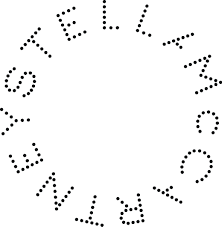

“We are committed to being an ethical, modern and honest company without compromising on luxury or quality.”
Stella McCartney
🌎
How do they ensure their sustainability?
Stella McCartney ensures sustainability by making use of the most cutting-edge and progressive materials that aim to reduce the impact on the planet and are always cruelty-free while following the principles of circularity.
- They use a medium proportion of eco-friendly and innovative materials, including GOTS-certified organic cotton, cashmere from 100% recycled waste Re.Verso™, and low-impact plant-based alternative materials (BananaTex®, VEGEA, Mylo™, MIRUM®). Further down the life-cycle, Stella McCartney employs technological advances to trace their products, lower their manufacturing impact, and increase their circularity.
- Additionally, they exclusively use paper that is either FSC-certified or made from at least 50% recycled content in their packaging.
- In 2014, the brand launched Clevercare—a garment labeling system covering five simple areas of clothing care: washing, temperature, drying, ironing, and dry cleaning to help extend the life of garments, decrease the number of pieces that end up in landfill, and reduce life-cycle environmental footprint.
🌐
How do they ensure their ethics?
Stella McCartney commits to transparency across supply chains through diligent reporting, measuring, and tracking.
- Stella McCartney is a member of the Ethical Trading Initiative (ETI), a human rights organization driving force in ethical trade. They also trace most of their supply chain.
- Additionally, Stella McCartney used lambswool and sheep wool certified with the Responsible Wool Standard, appropriately addressing the welfare of sheep (and their calves) and the land they graze on.
🤝
Are they part of any giving-back programs?
Stella McCartney partners with and supports many charities, including but not limited to BioPlanet, Million Trees Miami, Naked Heart Foundation, Meat Free Monday, and Sea Shepherd.
🛍️
What is their product range?
- Best for: womenswear, menswear, kidswear
- Product range: shirts, skirts, denim, sweaters, swimwear, dresses, pants, jackets, blazers, hoodies, knitwear, tops, blouses, T-shirts, underwear, socks, shorts, jumpsuits, playsuits, shoes, accessories, plus size
- Price range: $$$
- Size range: XS–XXXL
Eileen Fisher: A Sustainable Luxury Fashion Brand Focusing on Eco-Friendly Materials and Textile Circularity
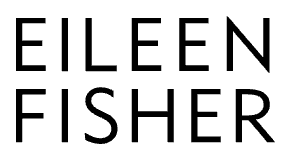

“The Biggest Thing We Can Do Is Reduce”
Eileen Fisher, founder of Eileen Fisher
🌎
How do they ensure their sustainability?
Eileen Fisher’s sustainability efforts focus on using eco-friendly materials, including recycled cotton, organic cotton, linen, and hemp, reducing greenhouse gas emissions generated from their operations and supply chain, reducing fabric and corporate waste, and recycling the brand’s used clothes back into new products.
- Their commitments to sustainable materials, circular systems, and environmentally friendly practices are demonstrated in initiatives like VISION 2020, Horizon 2030, and Renew.
- They are also certified as a B Corporation and a Bluesign® brand.
🌐
How do they ensure their ethics?
Eileen Fisher is committed to ethical practices.
- They have worker empowerment initiatives such as collective bargaining and the right to make a complaint. For example, their “Our Love, Peru” project supports over 450 families in and around Arequipa with higher fair trade wages and investments in the local community.
- Additionally, Their VISION 2020 project, set in 2015, tackled unethical labor practices. They also have a formal animal welfare policy aligned with Five Freedoms.
- Furthermore, Eileen Fishers uses lambswool and sheep wool certified with the Responsible Wool Standard, appropriately addressing the welfare of sheep (and their calves) and the land they graze on.
🤝
Are they part of any giving-back programs?
Eileen Fisher supports many women-owned businesses. The brand has provided, since their inception, many grants for women, including the current program Supporting Women in Environmental Justice.
🛍️
What is their product range?
- Best for: elegant, classic, and casual women’s clothes
- Product range: dresses, blouses, sweaters, cardigans, pants, skirts and outerwear, shoes, accessories
- Price range: $$$
- Size range: XXS–3XL
Maggie Marilyn: A Climate-Positive Luxury Fashion Brand

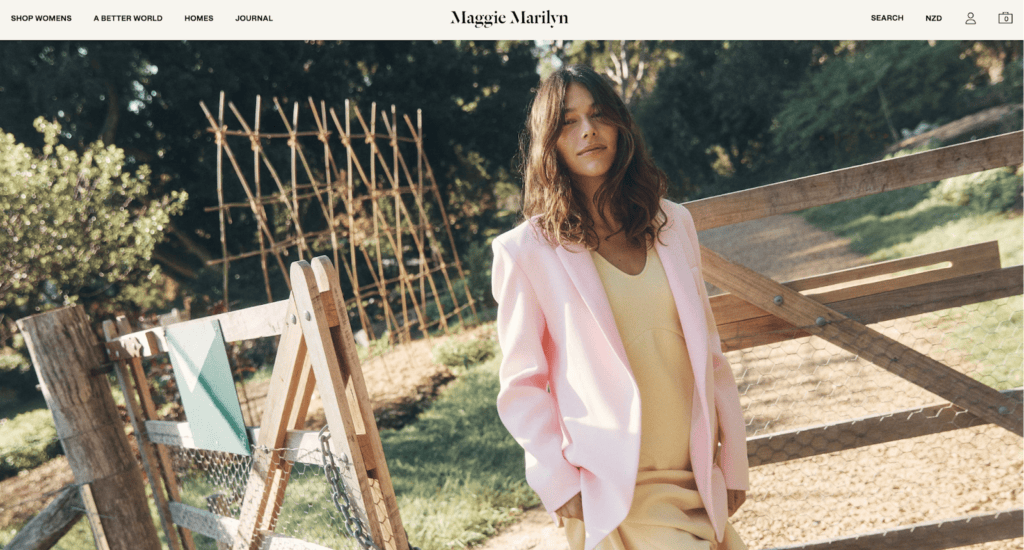
“We are a solution-based business, and while our clothes are important, ultimately we see them as the vehicle to building a community of people who will help us change the fashion industry and address its role in the climate crisis.”
Maggie Marilyn
🌎
How do they ensure their sustainability?
Maggie Marilyn ensures sustainability by sourcing eco-friendly materials, reducing their climate impact, and striving for circularity.
- Firstly, they source a medium proportion of lower-impact fabrics, including deadstock, ECONYL® regenerated nylon, European Flax® certified linen, organic cotton, recycled polyester, and TENCELTM. On top of that, 100% of their virgin sourced fabrics are OEKO-TEX® or Bluesign®-certified, meaning they are free from harmful chemicals, and their recycled polyester is made from post-consumer waste and certified by the Global Recycled Standard (GRS). The brand also makes eco-conscious choices about their packaging. For orders from customers, they use either The Better Packaging Company’s carbon-neutral mailer bags, which are reusable and recyclable, and FSC-certified cardboard boxes, which are manufactured locally in New Zealand with a high percentage of recycled content.
- Secondly, Maggie Marilyn reduces their climate impact by offsetting their emissions by securing carbon credits through CarbonZ, a platform committed to protecting and restoring native forests across New Zealand farmland.
- Lastly, their Somewhere range of traceable wardrobe essentials was designed to be circular, meaning that the garments can be recycled or composted at the end of their life. The brand also offers care guides and repair kits to keep their clothes in circulation longer. Additionally, their Restore initiative, launched in 2022, gives a second life to “usable” garments that contain mistakes during the production process.
🌐
How do they ensure their ethics?
Maggie Marilyn upholds all suppliers and manufacturers to their Supplier Code of Conduct, which covers animal welfare, environmental management, chemical and water use, greenhouse gas emissions, living wage, working conditions, and waste management.
- They also trace most of their supply chain and visit some suppliers regularly.
- Regarding animal welfare, they source exclusively ethically grown, non-mulesed and certified (ZQ or Responsible Wool Standard)- wool.
🤝
Are they part of any giving-back programs?
Maggie Marilyn organizes community events and donates all ticket sales to charities and social enterprises like Pillars, Trees For Survival, Dress For Success, and Sweet Charity.
🛍️
What is their product range?
- Best for: womenswear
- Product range: blazers, coats, jackets, dresses, swimwear, denim, T-shirts, singlets, knitwear, shirts, blouses, tops, pants, skirts, shorts
- Price range: $$$$
- Size range: XS–XXL
SANTICLER: Luxury Brand Committing to Slow Fashion and Circular Design Principles

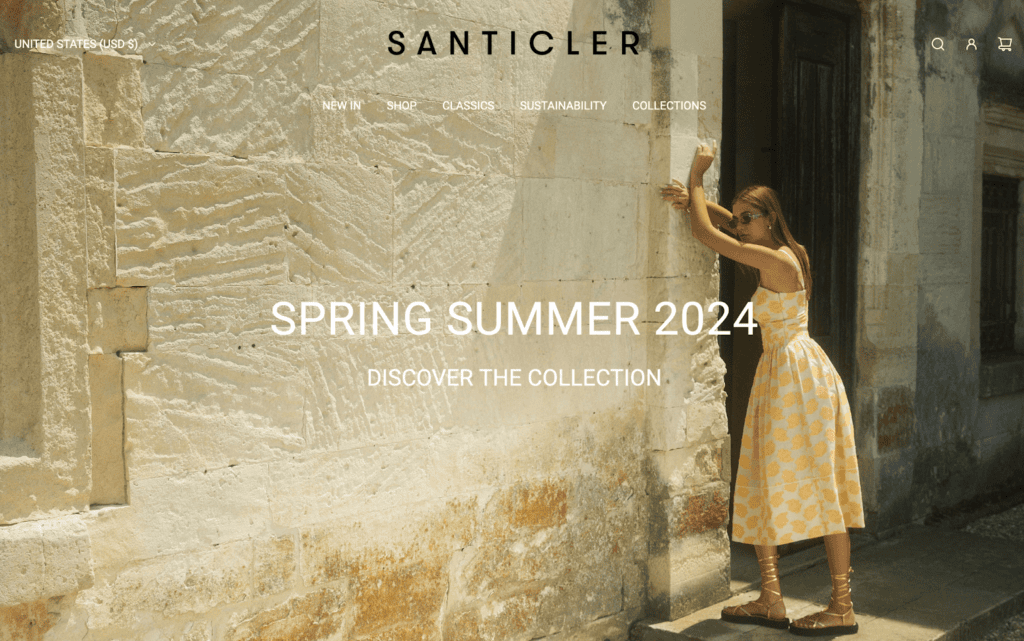
“Santicler is a future-forward brand that pushes boundaries, challenges long-established industry rules, and ultimately evolves how ready-to-wear clothes are designed, manufactured, consumed and recycled.”
SANTICLER
🌎
How do they ensure their sustainability?
SANTICLER promotes sustainability by sourcing eco-friendly materials and taking action to reduce waste.
- Firstly, they use a medium proportion of low-impact fibers, including GRS-certified recycled fibers (cashmere and elastane) and GOTS-certified organic cotton. Other fabrics in SANTICLER’s collections are guaranteed to be ethical and sustainably sourced with certifications like Responsible Wool Standard (for merino wool) and Forest Stewardship Council (for viscose). All their material suppliers comply with the European Union’s REACH legislation, ensuring the elimination of heavy metals, mutagenic or reproductive toxicants, carcinogens, and other dangerous chemicals during manufacturing processes. The brand also opts for eco-friendly packaging including using biodegradable and compostable materials and having shipping carbon emissions offset.
- Secondly, SANTICLER takes concrete actions to reduce waste, such as recycling 100% of all post-production waste generated in their supply chain and reusing treated wastewater for agricultural irrigation. Furthermore, their cashmere factory uses water from natural hot springs for garment finishing to reduce water and energy consumption.
- Lastly, SANTICLER sources and manufactures within Europe, keeping the transportation distances and associated carbon emissions relatively low.
🌐
How do they ensure their ethics?
SANTICLER traces most of their supply chain and audits some of their suppliers.
- They are transparent about the suppliers of their main fabrics and the certifications the suppliers have. Further down the life-cycle in the manufacturing stage, SANTICLER partners with a family-owned factory in Romania and is committed to ethical working conditions, including payment, health insurance, regulated working hours, and a ban on child labour.
- Regarding animal welfare, they source their wool fabrics from farms with Responsible Wool Standard certification to ensure that sheep and goats are treated responsibly.
🤝
Are they part of any giving-back programs?
SANTICLER donates monthly to support Sea Legacy’s conservation and rehabilitation projects around the world.
🛍️
What is their product range?
- Best for: menswear, womenswear, kidswear
- Product range: sweaters, bodysuits, tops, dresses, bottoms, accessories
- Price range: $$$
- Size range: XS–L
Mother of Pearl: A Sustainable and Wearable Luxury Brand
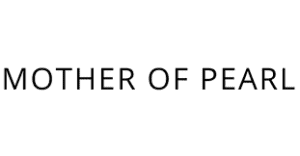
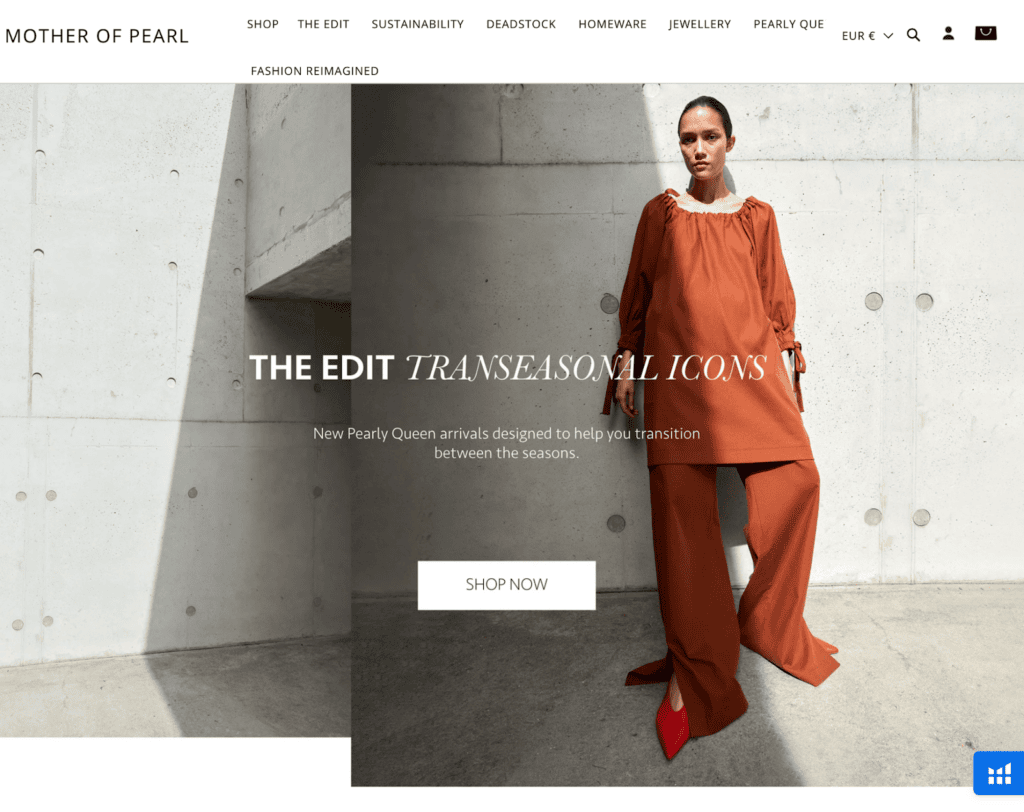
“From our sustainable and ethical supply chain through to pre-loved solutions, every stage of our garment’s life is considered.”
Mother of Pearl
🌎
How do they ensure their sustainability?
Mother of Pearl ensures sustainability by sourcing low-impact natural materials, promoting circularity, and reducing carbon footprints.
- They use a high proportion of eco-friendly, nature-based fibers, such as organic cotton, TENCEL™ lyocell fibers, and responsible wool.
- Furthermore, they commit to repairing garments bought and used by their customers via their partnership with SOJO, reusing leftover deadstock to Fabric Reimagined items, and enabling the reselling of pre-loved vintage clothing on Curate & Rotate or via regular sample sale drops.
- Finally, Mother of Pearl minimizes the geographical spread of the supply chain to reduce their transporting carbon footprint.
🌐
How do they ensure their ethics?
Mother of Pearl commits to traceability throughout their entire supply chain beyond the final garment production.
- Most of their factories are also based in Europe, being upheld to relatively high standards of safe working conditions.
- Lastly, they request audits from all factories regularly.
🤝
Are they part of any giving-back programs?
Mother of Pearl is not known to be part of any giving-back programs.
🛍️
What is their product range?
- Best for: womenswear
- Product range: dresses, knitwear, jackets, coats, sweatshirts, denim, tops, shirts, T-shirts, skirts, pants
- Price range: $$$
- Size range: XS–XL
Teatum Jones: Luxury Fashion Inspired by Human Stories
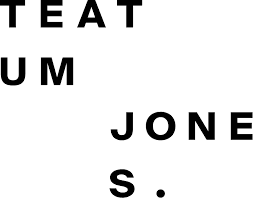
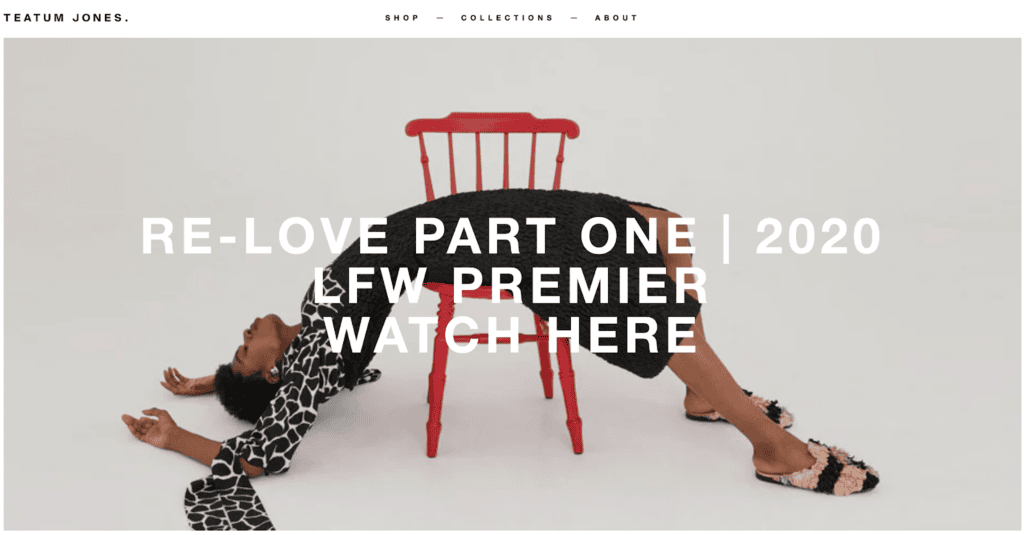
“We truly believe in the power of fashion to present a pro-social message of inclusivity and positive identity. We believe in creating socially conscious fashion that puts the craftspeople and the customer at the heart of our creation.”
Teatum Jones
🌎
How do they ensure their sustainability?
Teatum Jones prioritizes sustainability by recycling and upcycling fabrics to minimize textile waste.
- Firstly, they use a medium proportion of recycled and upcycled fabrics. Their Zero-Waste Collections, Re-Love Part 1 and Re-Love Part 2, are made with textile waste, and their garment linings are 80% made from deadstock or recycled yarns.
- Secondly, the brand doesn’t throw away textile scraps. At the end of each season, they collect, measure, and store all the remaining fabrics to be used for new collections. Their Re-Centre collection uses 40% of these archived textiles.
- In addition, Teatum Jones has decided to slow down their entire creative development process by choosing to study their collection narratives, themes, and subjects for the duration of a whole year. This helps with the transition of fabrics across seasons and, thus, further reduces waste.
- Lastly, their packaging can be reused, recycled, or composted.
🌐
How do they ensure their ethics?
Teatum Jones traces part of their supply chain, including the final production stage. They claim to have a Supplier Code of Conduct and are willing to share the list of suppliers involved in each garment upon request.
🤝
Are they part of any giving-back programs?
Teatum Jones is not known to be part of any giving-back programs.
🛍️
What is their product range?
- Best for: womenswear
- Product range: shirts, pants, jackets, blazers, knitwear, blouses, underwear
- Price range: $$$$
- Size range: XS–XXL
Minimalist: Women’s Luxury Brand Committing to Circularity


“Minimalist seeks to be part of the solution to the sustainability issue the fashion industry has awoken to without sacrificing design. All of the collection’s ingredients—from the water-preserving TENCEL™ jersey used for T-shirts to the ecological, biodegradable elastic to the non-toxic, water soluble garment bags—has been thoroughly researched and certified to best-in-class standards in conjunction with GRS, GOTS, FSC®, Bluesign® and OEKO-TEX® 100.”
Minimalist
🌎
How do they ensure their sustainability?
Minimalist ensures sustainability by sourcing eco-friendly materials and striving for circularity.
- Firstly, they use a medium proportion of low-impact, either plant-based or recycled fabrics. Specifically, Minimalist’s collection is made with EcoVero (a responsibly made viscose), TENCELTM, organic cotton, and recycled fibers. Garment components, such as elastics, linings, and zippers, are also made with low-impact materials. Minimalist opts for biodegradable elastics crafted from organic cotton and natural, biodegradable, and recyclable rubber. Shoulder pads and interlinings are made from GRS-certified post-consumer recycled materials. The brand also makes eco-conscious choices about their packaging: recycled paper hangers and hang tags, fully compostable or water-soluble garment bags, 100% recycled paper boxes, tissue, and stickers. Their materials are certified to best-in-class standards, including GRS, GOTS, FSC, Bluesign®, bioRe®, and OEKO-TEX®.
- Secondly, they opt for constructing garments with a single fiber whenever possible to ensure the highest potential for recyclability.
- Lastly, the brand produces locally in New York to reduce the climate impact of long-distance shipping.
🌐
How do they ensure their ethics?
Minimalist traces most of their supply chain. The final production stage happens in the US, a medium-risk country for labor abuse.
🤝
Are they part of any giving-back programs?
Minimalist is not known to be part of any giving-back programs.
🛍️
What is their product range?
- Best for: womenswear
- Product range: jumpsuits, tops, bottoms, dresses, jackets
- Price range: $$$$
- Size range: XS–L
One Vintage: Modern Pieces Handcrafted From Antique Textiles

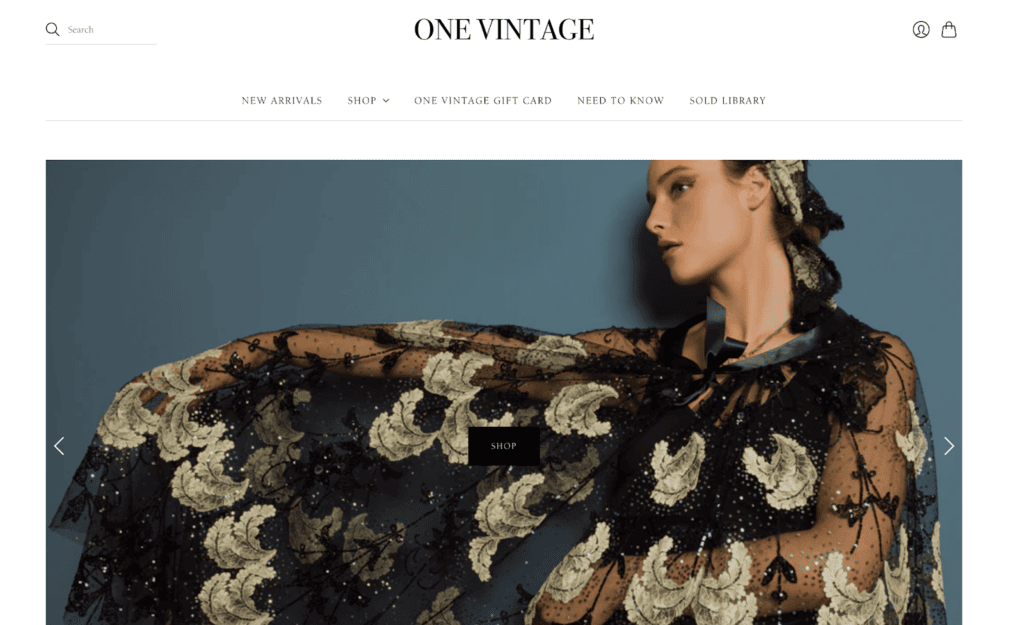
“In our determined pursuit of refinement, we embrace the charm of natural fibers, carefully chosen for their exceptional durability and resilience. ”
One Vintage
🌎
How do they ensure their sustainability?
One Vintage ensures sustainability by using low-impact materials, minimizing waste, and reducing their climate impact.
- Firstly, all their garments are made by repurposing antique textiles, which has a significantly lower impact than sourcing virgin fabrics. They also use recycled packaging whenever possible.
- Secondly, they limit their production runs to minimize waste.
- Lastly, their pieces are hand-made locally to reduce the climate impact of using machines and shipping goods long distances.
🌐
How do they ensure their ethics?
One Vintage traces most of their supply chain and has the final products made in-house by a small team.
🤝
Are they part of any giving-back programs?
One Vintage is not known to be part of any giving-back programs.
🛍️
What is their product range?
- Best for: womenswear
- Product range: dresses, tops, skirts, knitwear, kimonos, jackets, coats, accessories
- Price range: $$$$
- Size range: S–L
Malaika New York: A Luxury Brand With a Zero-Waste Approach
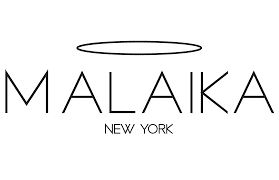
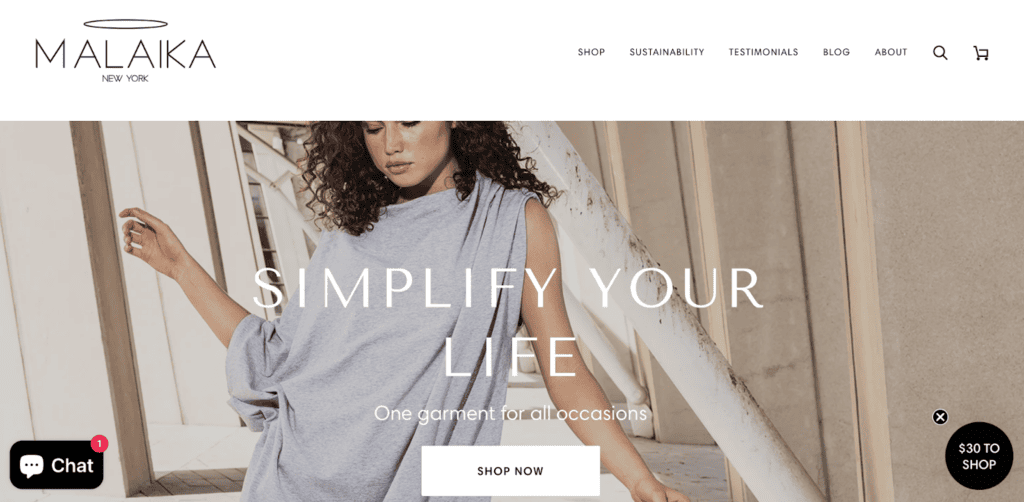
“Our garments are designed to feel like a second skin, offering both softness and durability to withstand the test of time. ”
Malaika New York
🌎
How do they ensure their sustainability?
Malaika New York ensures sustainability by using eco-friendly textile and packaging materials, minimizing textile waste, and reducing their climate impact.
- Firstly, they use sustainable fabrics, including GOTS-certified organic cotton, linen, ECONYL® regenerated nylon, recycled polyester, cupro (a regenerated cellulose fiber made in a closed-loop system using cotton linter waste), and EcoVero (Lenzing’s responsibly made viscose). Most of their packaging materials are also eco-friendly, including biodegradable shipping pouches, recyclable shipping boxes, and biodegradable bags.
- Secondly, Malaika New York takes several approaches to minimize textile waste. They employ cutting techniques to maximize fabric use, rescue deadstock fabrics to incorporate them into their collections (5-10%), upcycle their surplus fabrics and trims, and facilitate pre-loved clothes sales to keep textiles in circulation longer. Also, the brand aims for clean materials, which means 100% of the same material is used when possible, enabling recycling at the end of life.
- Lastly, Malaika New York takes concrete actions to reduce their climate impact. These include installing LED light bulbs to save energy, using renewable energy to power their studio, and using trucks for delivery whenever possible.
🌐
How do they ensure their ethics?
Malaika New York has a Code of Conduct that covers four of the ILO’s Fundamental Principles and Rights at Work. They also trace part of their supply chain, and their final production stage happens at Kopenhag Studio in Izmir, Turkey, where safe working conditions and living wages are guaranteed.
🤝
Are they part of any giving-back programs?
Malaika New York is not known to be part of any giving-back programs.
🛍️
What is their product range?
- Best for: womenswear, menswear, childrenswear
- Product range: dresses, vests,
- Price range: $$$
- Size range: XS–XL
Why Is It Important to Buy Products Made of More Sustainable Fabrics
It is important to buy products made of more sustainable fabrics because a sustainable textile industry has a lower carbon footprint, helps save natural resources, and is better for forests, animals, and humans.
Buying Sustainable Fabrics Reduces Your Carbon Footprint
The production of clothing and footwear is estimated to contribute 10% of global greenhouse gas emissions—more than all international flights and shipping combined. If the fashion industry were a country, it would be the fourth largest emitter of carbon dioxide.
One way to reduce the carbon footprint of the clothes you buy is to opt for sustainable fabrics. Sustainable fabrics, which are often made with natural or recycled fibers, have relatively low carbon footprints compared to petroleum-based fabrics. For example, organic cotton made in the US has a carbon footprint of 2.35 kg CO2 (per ton of spun fiber)—a quarter of polyester’s carbon footprint.
Buying Sustainable Fabrics Reduces Demand for Natural Resources and Waste Management
The textile industry uses water and land to grow wool and other fibers. It is estimated that 79 billion cubic meters of water were used for the sector worldwide in 2015. For example, producing a single cotton T-shirt requires as much water as one person drinks for 2.5 years (2,700 liters of fresh water).
Worse yet, the textile economy is vastly more linear than circular: the largest amount of resources used in clothes ended up in landfills (instead of being recycled to remake clothes). According to a report by the Ellen MacArthur Foundation,
- Less than 3% of materials used in the textile economy in 2015 came from recycled sources.
- In other words, more than 97% of resources used in making clothes are newly extracted.
When clothing items are disposed of within a short period of time—under a year in the case of half of the fast fashion clothes—the natural systems that provide raw materials for fabrics don’t have enough time to recover and regenerate, which could lead to ecological breakdown.
Sustainable fabrics are made with less water and emissions while lasting longer:
- Because they are durable, you don’t need to buy new clothes too often.
- Thus, you help reduce the pressure to extract more resources for making new items.
Similarly, making and consuming sustainable fabrics made with recycled materials reduces the demand for virgin materials while helping tackle waste management.
Buying Sustainable Fabrics Encourages Sustainable Management of Forests
Sustainable plant-based fabrics are made with raw materials from forests and plantations that are sustainably managed, such as complying with FSC standards.
When you buy sustainable plant-based fabrics, you discourage unsustainable forestry practices like illegal logging. You can help reduce deforestation, biodiversity loss, and the effects of climate change.
Buying Sustainable Fabrics Encourages Fairer Treatment of Animals
The fashion industry is rife with animal mistreatment when it comes to making animal-based fabrics like wool or silk. Every year, billions of animals suffer and die for clothing and accessories.
Buying sustainable vegan alternatives can help reduce the pressure on raising more and more animals to meet the demand for animal-based fabrics while sacrificing their well-being and lives.
Suppose you have to buy fabrics made with, for example, wool or silk; make sure you only choose brands committed to cruelty-free products. In that case, you help advocate better treatments for animals raised within the textile industry.
Using Sustainable Fabrics Encourages Fairer Treatment of Textile Workers
Recent statistics from UNICEF estimated as many as 170 million child laborers worldwide, many of whom were engaged in some form of work in the textile industry. They don’t get paid minimum wages and often work long hours.
When you buy sustainable fabrics from brands transparent about the working conditions at their factories, you discourage the use of child labor and help promote better working conditions for textile workers.
How Can You Generally Buy More Sustainable Fabrics
The key to sustainably buying fabrics is to check on relevant environmental and original certifications.
For natural fabrics:
- Global Organic Textile Standard (GOTS): A globally-recognized certification system that ensures a certain threshold of organic content has been met. It covers manufacturing, packaging, labeling, transportation, and distribution (but not what happens in the fields where crops are grown).
- USDA Certified Biobased Product: The USDA BioPreferred® Certification is a voluntary certification offered by the United States Department of Agriculture. The certification identifies products made from plants or other renewable materials.
- Ecolabel: Ecolabel is the official European Union voluntary label recognized worldwide for certified products with a guaranteed, independently-verified low environmental impact. The label requires high environmental standards throughout the entire life-cycle: from raw material extraction through production and distribution to disposal. It also encourages companies to develop innovative, durable, easy-to-repair, and recyclable products.
For plant-based semi-natural/semi-synthetic fabrics:
- Forest Stewardship Council: An FSC certification ensures that the wool (or wool-like material) comes from responsibly managed forests that provide environmental, social, and economic benefits.
There are two types of FSC Certification:- FSC Forest Management Certification, with a focus on the origin of the wood—the forest.
- FSC Chain of Custody Certification, which focuses on the path from the forest to the customer’s home.
- Program for Endorsement of Forest Certification: PEFC’s approaches to sustainable forest management are in line with protecting the forests globally and locally and making the certificate work for everyone. Getting a PEFC certification is strict enough to ensure the sustainable management of a forest is socially just, ecologically sound, and economically viable but attainable not only by big but small forest owners.
For recycled fabrics:
- Recycled Claim Standard (RCS): The Textile Exchange RCS was originally developed as an international, voluntary standard that sets requirements for third-party certification of recycled input and chain of custody.
- The Global Recycled Standard (GRS): The Global Recycled Standard (GRS) is an international, voluntary, full product standard that sets requirements for third-party certification of Recycled Content, chain of custody, social and environmental practices, and chemical restrictions. It can be used for any product with more than 20% recycled material.
For all types of fabrics:
- STeP by OEKO-TEX®: STeP by OEKO-TEX® is an independent certification system for brands, retailers, and manufacturers from the textile and leather industry. It communicates organizational environmental measures, including reducing carbon footprint and water usage.
- OEKO-TEX® Standard 100: OEKO-TEX® labels aim to ensure that products pose no risk to human health (i.e., containing banned chemicals).
Some certifications that are signaling brands’ efforts toward lowered environmental impacts and a circular economy are:
- B Corp Certification: The label B Corp is a certification reserved for for-profit companies. Certified holders are assessed on their social and environmental impacts.
- Cradle2Cradle certification: Cradle2Cradle provides a standardized approach to material circularity. It assesses whether products have been suitably designed and made with the circular economy in mind covering five critical categories: material health, material reuse, renewable energy and carbon management, water stewardship, and social fairness.
Final Thoughts
The fast fashion industry has pushed for us to buy trend-dependent, easily replaceable clothing items. Yet, overbuying and landfilling clothes can have a significant impact, especially if they are luxury clothing items made with high-impact materials like leather, lambswool, or cashmere.
By purchasing new or pre-loved clothes from these luxury fashion brands that commit to sustainability, you support their mission to create a fairer and less harmful textile industry for all lives on Earth.
Here is the list (again) of the most sustainable luxury clothing brands:
- WE-AR4
- Stella McCartney
- Eileen Fisher
- Maggie Marilyn
- SANTICLER
- Mother of Pearl
- Teatum Jones
- Minimalist
- One Vintage
- Malaika
To make your use of clothes from these luxury clothing brands even more sustainable, follow these steps:
- Buy second-hand, recycled, or upcycled clothes.
- While using these clothes, maximize the number of wears between washes and keep them as long as possible.
- At the end-of-life of your clothes, upcycle the materials to extend their usage and arrange for them to be recycled or properly disposed of.
Stay impactful,

Sources
- Impactful Ninja: How Sustainable Are Leather Fabrics? A Life-Cycle Analysis
- Impactful Ninja: How Sustainable Are Lambswool Fabrics? A Life-Cycle Analysis
- Impactful Ninja: How Sustainable Are Cashmere Fabrics? A Life-Cycle Analysis
- WE-AR4: Home
- Stella McCartney: Home
- Eileen Fisher: Home
- Maggie Marilyn: Home
- SANTICLER: Home
- Mother of Pearl: Home
- Teatum Jones: Home
- Minimalist: Home
- One Vintage: Home
- Malaika New York: Home
- Good On You: Brand Directory | WE-AR4
- Impactful Ninja: How Sustainable Are Leather Fabrics? A Life-Cycle Analysis
- WE-AR4: Progress
- WE-AR4: Material Guidelines
- Impactful Ninja: How Sustainable Are Natural Fabrics Fabrics? A Life-Cycle Analysis
- Impactful Ninja: How Sustainable Are Cotton Fabrics? A Life-Cycle Analysis
- Impactful Ninja: How Sustainable Are Linen Fabrics? A Life-Cycle Analysis
- WE-AR4: Planet
- WE-AR4: RE-AR4 Vintage and Worn
- WE-AR4: Supplier Code of Conduct
- WE-AR4: People
- International Labor Organization
- Ethical Trade Initiative
- WE-AR4: Animal Welfare
- Impactful Ninja: How Sustainable Are Sheep Wool Fabrics? A Life-Cycle Analysis
- Impactful Ninja: How Sustainable Are Cashmere Fabrics? A Life-Cycle Analysis
- Impactful Ninja: How Sustainable Are Silk Fabrics? A Life-Cycle Analysis
- Textile Exchange: Global Recycled Standard
- Textile Exchange: Recycled Content Standard
- Impactful Ninja: How Sustainable Are Recycled Fabrics? A Life-Cycle Analysis
- Textile Exchange: Responsible Down Standard
- Global Organic Textile Standard (GOTS): Home
- Textile Exchange: Organic Content Standard
- 1% for the Planet
- Stella McCartney: Sustainability
- Stella McCartney: Circularity
- Good On You: Brand Directory | Stella McCartney
- Global Organic Textile Standard (GOTS): Home
- Stella McCartney: Organic cotton
- Stella McCartney: Recycled cashmere
- Stella McCartney: BananaTex®
- Stella McCartney: VEGEA
- Stella McCartney: Mylo™
- Stella McCartney: MIRUM®
- Stella McCartney: Traceability and Blockchain Technology
- Stella McCartney: Metals
- Stella McCartney: Spotlight on Airslide
- Stella McCartney: Paper and Packaging
- Stella McCartney: Clevercare
- Stella McCartney: Measuring our impact
- Ethical Trading Initiative: Home
- Impactful Ninja: How Sustainable Are Lambswool Fabrics? A Life-Cycle Analysis
- Impactful Ninja: How Sustainable Are Sheep Wool Fabrics? A Life-Cycle Analysis
- Textile Exchange: Responsible Wool Standard
- Stella McCartney: Charities
- Stella McCartney: BioPlanet USA
- Million Trees Miami: Home
- Naked Heart Foundation: Home
- Meat Free Monday: Home
- Sea Shepherd: Home
- Impactful Ninja: How Sustainable Are Recycled Cotton Fabrics? A Life-Cycle Analysis
- Impactful Ninja: How Sustainable Are Organic Cotton Fabrics? A Life-Cycle Analysis
- Impactful Ninja: How Sustainable Are Linen Fabrics? A Life-Cycle Analysis
- Impactful Ninja: How Sustainable Are Hemp Fabrics? A Life-Cycle Analysis
- Eileen Fisher RENEW: Home
- Eileen Fisher: OUR VISION2020 RESULTS
- Eileen Fisher: Our Brand
- B Corporation: Eileen Fisher
- Bluesign®: Home
- Good On You: Brand Directory | Eileen Fisher
- Eileen Fisher: Community | Love, Peru. Our Fair Trade Project.
- CFDA: HOW EILEEN FISHER IS THE ULTIMATE SUSTAINABLE LABEL
- Impactful Ninja: How Sustainable Are Lambswool Fabrics? A Life-Cycle Analysis
- Impactful Ninja: How Sustainable Are Sheep Wool Fabrics? A Life-Cycle Analysis
- Textile Exchange: Responsible Wool Standard
- Seek Capital: 11 Small Business Grants For Women
- B-Corporation: Maggie Marilyn
- Good On You: Brand Directory | Maggie Marilyn
- Impactful Ninja: How Sustainable Are ECONYL Fabrics? A Life-Cycle Analysis
- Impactful Ninja: How Sustainable Are Linen Fabrics? A Life-Cycle Analysis
- Impactful Ninja: How Sustainable Are Organic Cotton Fabrics? A Life-Cycle Analysis
- Impactful Ninja: How Sustainable Are Recycled Polyester Fabrics? A Life-Cycle Analysis
- Impactful Ninja: How Sustainable Are TENCELTM Fabrics? A Life-Cycle Analysis
- OEKO-TEX®
- Bluesign
- Maggie Marilyn: PLANET
- Textile Exchange: Global Recycled Standard
- Forest Stewardship Council
- Maggie Marilyn: Somewhere
- Maggie Marilyn: 2022 Sustainability Progress Report
- Maggie Marilyn: Supplier Code of Conduct
- Discovery ZQ: ZQ Merino
- Textile Exchange: Responsible Wool Standard
- Impactful Ninja: How Sustainable Are Wool Fabrics? A Life-Cycle Analysis
- Pillars
- Trees For Survival
- Dress For Success
- Sweet Charity
- Good On You: Brand Directory | SANTICLER
- Textile Exchange: Global Recycled Standard
- Impactful Ninja: How Sustainable Are Recycled Fabrics? A Life-Cycle Analysis
- Impactful Ninja: How Sustainable Are Cashmere Fabrics? A Life-Cycle Analysis
- Impactful Ninja: How Sustainable Are Elastane Fabrics? A Life-Cycle Analysis
- Global Organic Textile Standard (GOTS): Home
- Impactful Ninja: How Sustainable Are Organic Cotton Fabrics? A Life-Cycle Analysis
- SANTICLER: MATERIALS + CERTIFICATIONS
- Textile Exchange: Responsible Wool Standard
- Impactful Ninja: How Sustainable Are Merino Wool Fabrics? A Life-Cycle Analysis
- Forest Stewardship Council
- Impactful Ninja: How Sustainable Are Viscose Fabrics? A Life-Cycle Analysis
- SANTICLER: ENVIRONMENT
- SANTICLER: CIRCULARITY
- SANTICLER: TRACEABILITY
- SANTICLER: SOCIAL RESPONSIBILITY
- SANTICLER: Animal Welfare
- Mother of Pearl: FASHION REIMAGINED
- Mother of Pearl: MOP Materials
- Mother of Pearl: Circularity
- Mother of Pearl: Environment
- Good On You: Brand Directory | Mother of Pearl
- Impactful Ninja: How Sustainable Are Organic Cotton Fabrics? A Life-Cycle Analysis
- Impactful Ninja: How Sustainable Are Lyocell Fabrics? A Life-Cycle Analysis
- Impactful Ninja: How Sustainable Are Wool Fabrics? A Life-Cycle Analysis
- SOJO: Home
- Mother of Pearl: Deadstock Sale
- Curate & Rotate: Home
- Mother of Pearl: TRANSPARENCY
- Mother of Pearl: SOCIAL RESPONSIBILITY
- Good On You: Brand Directory | Teatum Jones
- Teatum Jones: Re-Love Part 1
- FORWARD LAB: Teatum Jones join forces with Liberty for a new zero-waste collection
- Teatum Jones: About
- Teatum Jones: Re-Centre
- Good On You: Brand Directory | Minimalist
- Impactful Ninja: How Sustainable Are Recycled Fabrics? A Life-Cycle Analysis
- Impactful Ninja: How Sustainable Are EcoVero Fabrics? A Life-Cycle Analysis
- Impactful Ninja: How Sustainable Are Viscose Fabrics? A Life-Cycle Analysis
- Impactful Ninja: How Sustainable Are TENCELTM Fabrics? A Life-Cycle Analysis
- Impactful Ninja: How Sustainable Are Organic Cotton Fabrics? A Life-Cycle Analysis
- Minimalist: OUR INGREDIENTS
- Textile Exchange: Global Recycled Standard
- Global Organic Textile Standard (GOTS): Home
- Forest Stewardship Council
- Bluesign
- BioRe
- OEKO-TEX
- Minimalist: Circular Fashion
- One Vintage: NEED TO KNOW
- Good On You: Brand Directory | One Vintage
- Malaika New York: Sustainable fabrications
- Global Organic Textile Standard (GOTS): Home
- Impactful Ninja: How Sustainable Are Organic Cotton Fabrics? A Life-Cycle Analysis
- Impactful Ninja: How Sustainable Are Linen Fabrics? A Life-Cycle Analysis
- Impactful Ninja: How Sustainable Are ECONYL Fabrics? A Life-Cycle Analysis
- Impactful Ninja: How Sustainable Are Recycled Polyester Fabrics? A Life-Cycle Analysis
- Impactful Ninja: How Sustainable Are Cupro Fabrics? A Life-Cycle Analysis
- Impactful Ninja: How Sustainable Are EcoVero Fabrics? A Life-Cycle Analysis
- Impactful Ninja: How Sustainable Are Viscose Fabrics? A Life-Cycle Analysis
- Malaika New York: SUSTAINABILITY
- Malaika New York: Rewear by Malaika
- Malaika New York: Code of Conduct
- Good On You: Brand Directory | Malaika New York
- International Labour Organization: ILO Declaration on Fundamental Principles and Rights at Work
- European Parliament: The impact of textile production and waste on the environment (infographic)
- Science Direct: The challenge of “Depeche Mode” in the fashion industry – Does the industry have the capacity to become sustainable through circular economic principles, a scoping review
- Science Direct: Carbon Footprint of Textile and Clothing Products
- European Parliament: Environmental impact of the textile and clothing industry
- European Parliament: What if fashion were good for the planet?
- Ellen MacArthur Foundation: A New Textiles Economy: Redesigning fashion’s future
- McKinsey: Style that’s sustainable: A new fast-fashion formula
- Forest Stewardship Council: Home
- Our World in Data: Deforestation and Forest Loss
- Our World in Data: Renewable Energy
- Peta: Animals Used For Clothing
- The Guardian: Child labour in the fashion supply chain
- Impactful Ninja: How Sustainable Are Natural Fabrics? A Life-Cycle Analysis
- Global Organic Textile Standard (GOTS): Home
- BioPreferred: WHAT IS THE BIOPREFERRED PROGRAM?
- European Commission: Environment | EU Ecolabel
- Impactful Ninja: How Sustainable Are Semi-Natural/Semi-Synthetic Fabrics? A Life-Cycle Analysis
- Forest Stewardship Council
- FSC Forest Management Certification
- FSC Chain of Custody Certification
- Textile Exchange: The RCS and GRS are designed to boost the use of recycled materials
- Program for Endorsement of Forest Certification
- Impactful Ninja: How Sustainable Are Recycled Fabrics? A Life-Cycle Analysis
- Textile Exchange: Recycled Claim Standard
- Textile Exchange: Global Recycled Standard
- OEKO-TEX: Certification according to STeP by OEKO-TEX
- OEKO-TEX: STANDARD 100 by OEKO-TEX®
- B Corp Certification: Home
- C2CCertified: Home















